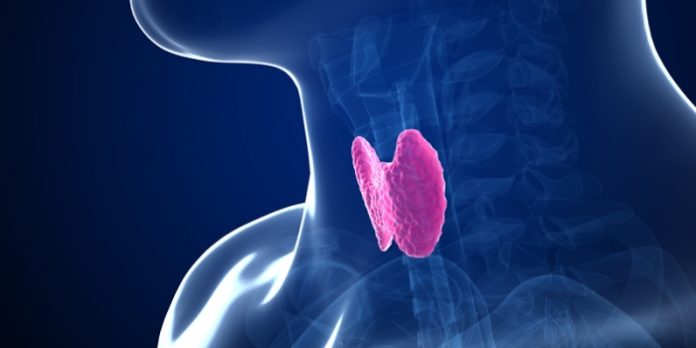
A group of researchers from Arkansas University for Medical Sciences have trained a dog to detect thyroid cancer by smelling patients’ urine samples.
The German shepherd-mix named Frankie predicted with 88 percent accuracy which patients had thyroid cancer and which had a benign disease. The formerly stray pup was rescued from a busy street in Little Rock, Arkansas.
The study is the first attempt at using canines to diagnose thyroid cancer through scent imprinting – a way of training dogs to recognize a particular smell. It follows an earlier study that showed dogs could reliably distinguish between the urine samples of healthy people and those with cancer.
“We’ve all looked at it from a skeptical, scientific standpoint, but the data just keeps leading us to the fact that this has remarkable clinical potential,” Dr. Arny Ferrando, one of the lead researchers, said in a press release.
Over six months, researchers at UAMS scent-imprinted Frankie with samples of blood, tissue and urine from patients with cancerous thyroid growths. Frankie was trained to turn away when benign thyroid disease was smelled, and lie down at the scent of metastatic thyroid carcinoma, a common thyroid cancer.

Above, Frankie participates in a scent-imprinting training session.
The researchers gave Frankie samples from patients who came to the university clinic with symptoms of thyroid cancer. The results of Frankie’s diagnosis, which was blinded to researchers, was compared with surgical pathologies, according to the study.
Of 34 patients, Frankie accurately predicted the diagnosis 30 times.
“Detecting and diagnosing thyroid cancer can be difficult, because it’s often looking for a very small number of occurrences in a very large background of benign nodules. It is also difficult to say with certainty that a patient is cancer-free after surgery,” co-lead researcher Dr. Donald Bodenner, director of the thyroid center at the university and chief of endocrine oncology, said in a statement.
As a result, he said, patients are often subject to “recurrent medical procedures and a large number of thyroid surgeries performed unnecessarily.”
Thyroid cancer is one of the fastest-growing cancer diagnoses worldwide, though the death rate has remained stable for years – leading some to believe that doctors are detecting growths that don’t need treatment. Diagnosis rates have risen especially fast in countries such as South Korea, where health officials have started mass screening.
Compared with other cancers in the United States, thyroid cancer has a relatively low death rate. The American Cancer Society projects that the cancer, which grows in the thyroid gland located in the neck, will result in 1,950 deaths in 2015, most of which (about two out of three) are diagnosed in people younger than 55. Women are significantly more likely than men to be diagnosed with thyroid cancer and to have an aggressive form of the disease.
“Having a technique with which to do these things with a higher degree of certainty would be a tremendous advance in thyroid cancer,” said Dr. Bodenner. In addition to reducing costs and unnecessary surgeries, the researchers say the new method could be transported to underserved areas where traditional cancer detection methods — namely, biopsy and ultrasound — are unavailable.
In the future, the UAMS teams hopes to identify the olfactory elements present in the samples that allow Frankie to determine which are cancerous. Dogs’ sense of smell is often cited as being up to 100,000 times more acute than that of humans, according to PBS. The researchers said it’s also possible that the training could be used to diagnose other cancers such as ovarian, breast, kidney, bladder and prostate.
The findings were presented at the Endocrine Society’s annual conference, Endo 2015.
